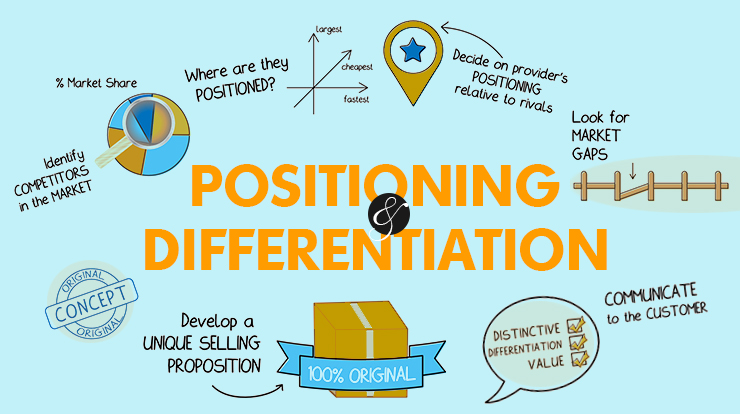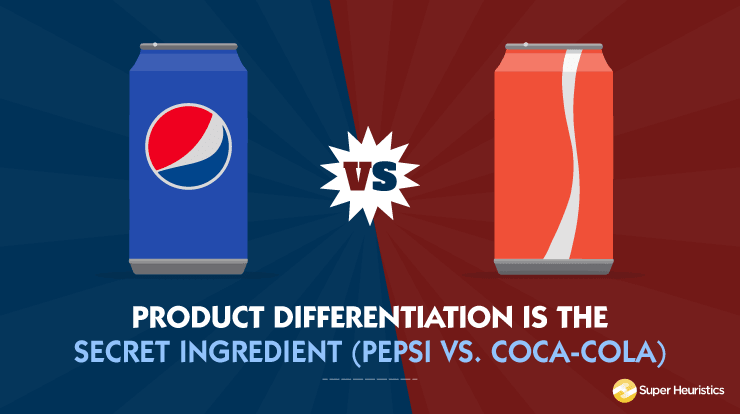
The world is a museum of products. Everything that you see around you, right from the phones or laptops you may be reading this on, to the pen and notebook you may be used to make notes inside the classroom, are nothing but products.
How do you, then, decide which phone to buy, or which laptop to purchase? Even when we buy a pen or a notebook we have our preferences. How do we choose from among so many alternatives?
Perhaps as a kid, the Add-Gel commercial said that it is a choice of pen for toppers, and that stuck with you ever since. Or maybe Lenovo says that it makes life easier for students and professionals with its latest touch technology, and that’s why you bought yourself a Lenovo just before entering into an MBA course. The space that these brands occupy in your mind is nothing but Positioning.
If you go on to see, most of the products in a category are similar. There may be virtually no difference between the way an Add-Gel or a Cello Pointec works.
However, Add-Gel positions itself as a product of choice for toppers, whereas Cello Pointec positions itself as a pen that can write for miles (Chalta hi jaaye). Depending upon the kind of person you are, you may get drawn towards either, when in fact both of them are just gel pens that can help you write. No difference there!
Positioning strategy is all about creating a difference in the consumers’ minds. Darpan Saxena’s article on this topic, The Positioning Formula: What is Positioning (Viagra Example), explains positioning in greater detail. It is an important advertising and marketing strategy that helps a brand to maintain a distinct identity in a market that is filled with similar products.
So how does Positioning work?
Positioning strategies are intended to target your psyche and emotions. You may be a sportsperson looking to excel in a game, and Adidas tells you Impossible is Nothing. Or you may have just completed a project successfully at the workplace, and you call for Carlsberg, because ‘That calls for a Carlsberg’ has invariably stuck inside your sub-conscious and gets recalled every time there is a moment that deserves celebration.
What are the different types of Positioning Strategies?
Let’s see some marketing positioning examples –
- By Attribute and Benefit – When the brand positions itself on the basis of certain attributes, such as ‘Sabse zyada safedi’ (Tide), or benefits like ‘Shave Time, Shave Money’ (Dollar Shave Club)
- By Quality – Jewellery brands often use this positioning because they talk about the purity of gold or diamond. If you study the positioning of TBZ Jewellers, Tanishq and the likes, you will notice the same.
- By Use and Application – Here, the product is positioned strictly on the basis of the purpose it serves. These days, Smartphones cater to photographers and photography enthusiasts, and therefore let’s take a few examples from this segment. One Plus 5 says ‘Dual Camera, Clearer Photos’, whereas Samsung Galaxy S9 promotes itself as ‘The Camera Reimagined’
- By Product Class – When the Apple iPod arrived, it caused tremors among CD and Cassette Player manufacturers, and virtually threatened to make them extinct. It positioned itself as ‘1000 Songs in your Pocket’. It was communicating a product class of pocket MP3 players.
- By Product User – Brands that specifically speak to a segment of users and position their products for those class of customers use this route of positioning. Old Spice caters to grown-up men, and therefore says ‘Smellcome to Manhood’, whereas Wild Stone talks about dangerous liaisons because it is positioned towards a slightly younger audience group.
- By Culture or Country – Certain geographies are famous for certain things. Brands often resort to this when they want to highlight a key feature of their offering. That’s why Taj Hotels is all about Indian hospitality, whereas BMW and Mercedes are ‘German’
Is Positioning the same as a Tagline?
NO. Positioning and tagline are not the same. Brand Positioning is a much broader concept, and a tagline simply assists in communicating that brand positioning. A tagline is one of the means through which a brand conveys what its positioning is. But various other activities build and reinforce the positioning over time, such as celebrity association (Thumbs Up associating with the macho Akshay Kumar), an advertisement, a jingle, consumer promotions, and other marketing events.
What is Differentiation, then?
Just like Positioning, there is an important concept in marketing known as differentiation. While positioning is the unique space that a brand occupies in a consumer’s mind, Differentiation is what makes the brand stand out from its competitors. This may be –
- Unique Attribute – Google literally offers an entire suite of products for advertisers such as Ad-Sense, Ad-Words that no one else does. Facebook comes close.
- Cutting Edge Technology – iMacs have inbuilt tools that help editors, music makers, graphic artists etc. This makes is invaluable to the creative community.
- One of a kind Packaging – The packaging of Paper Boat was one of the contributing factors to its success. The packaging was very unique and fresh.
- Price – Some brands are able to achieve massive cost differentiation, due to economies of scale or again, superior technology. Brands like Lava mobiles fall into this category.
- Service – Dell is known for its unmatchable after sales service.
To sum it up, positioning may mostly be psychological, whereas differentiation is tangible in a way.
The Hotstar Case
Hotstar is an OTT (over-the-top) video streaming service that was launched by the STAR network in 2015. In just a matter of a couple of years, it has become India’s No. 1 OTT service by subscriber base, with 75 million monthly active subscribers! The closest is Voot, with 22 million subscribers. This will give you an idea of how ahead Hotstar is as compared to its competitors.
Hotstar’s success is largely a result of two things – product offerings, and its marketing strategy. It has one of the best-known brand positioning strategies. Hotstar noticed that in India, most of the people watch television with their families. Kids are often forced to watch News that may not want to, just because their parents are watching. In some households, parents may invariably end up watching cartoons just because the kids are pestering them. Teenagers and young adults fall somewhere in between, and most often have to yield to both parents and kids in the house.
Go Solo
That’s when Hotstar decided to come up with its positioning – Go Solo! Go Solo liberates an individual and puts the power of content consumption in one’s own hands. After all, Hotstar was designed to be accessible by Smartphones, a device which far overpowers desktops when it comes to content consumption statistics for Hotstar today.
Go Solo implies that you don’t have to watch what your parents, younger siblings, partners, or friends are watching. You can choose your own content and watch it without any restrictions. To establish this positioning, they came up with an advert that you can watch here –
It gives various instances of people talking about their individuality. A girl says ‘Mom ko drama pasand hai, but I’m not my Mom’. Many more people talk about such stories.
To further cement this, they came up with an ad featuring MS Dhoni –
How do the competitors stack up?
As we’ve seen, Hotstar is positioning itself as a platform that places the power of content consumption in each individual’s hand. One needn’t be dependent upon what the other is watching. To each his own is essentially the philosophy behind Go Solo.
Some of the famous competitors of Hotstar in the OTT space are Netflix India, Voot, Amazon Prime, and perhaps TVF. Netflix India positions itself as a provider of Premium Content.
It is not meant for the masses – rather, for the classes. Similarly, TVF has created a niche positioning of original humorous content, as well as famous comedy TV shows from the past.
Amazon Prime is a perfect example of positioning by product class since it talks about watching TV shows on-the-go without worrying about the interruption. It essentially highlights the benefits of an OTT service. Last but not the least, Voot talks about happiness and addiction. When you’re watching Voot, you are happy; else you are restless.
The positioning of every channel is largely dependent upon the volume, quality, and genres of content that they serve. Let’s see how this race pans out in the future!






